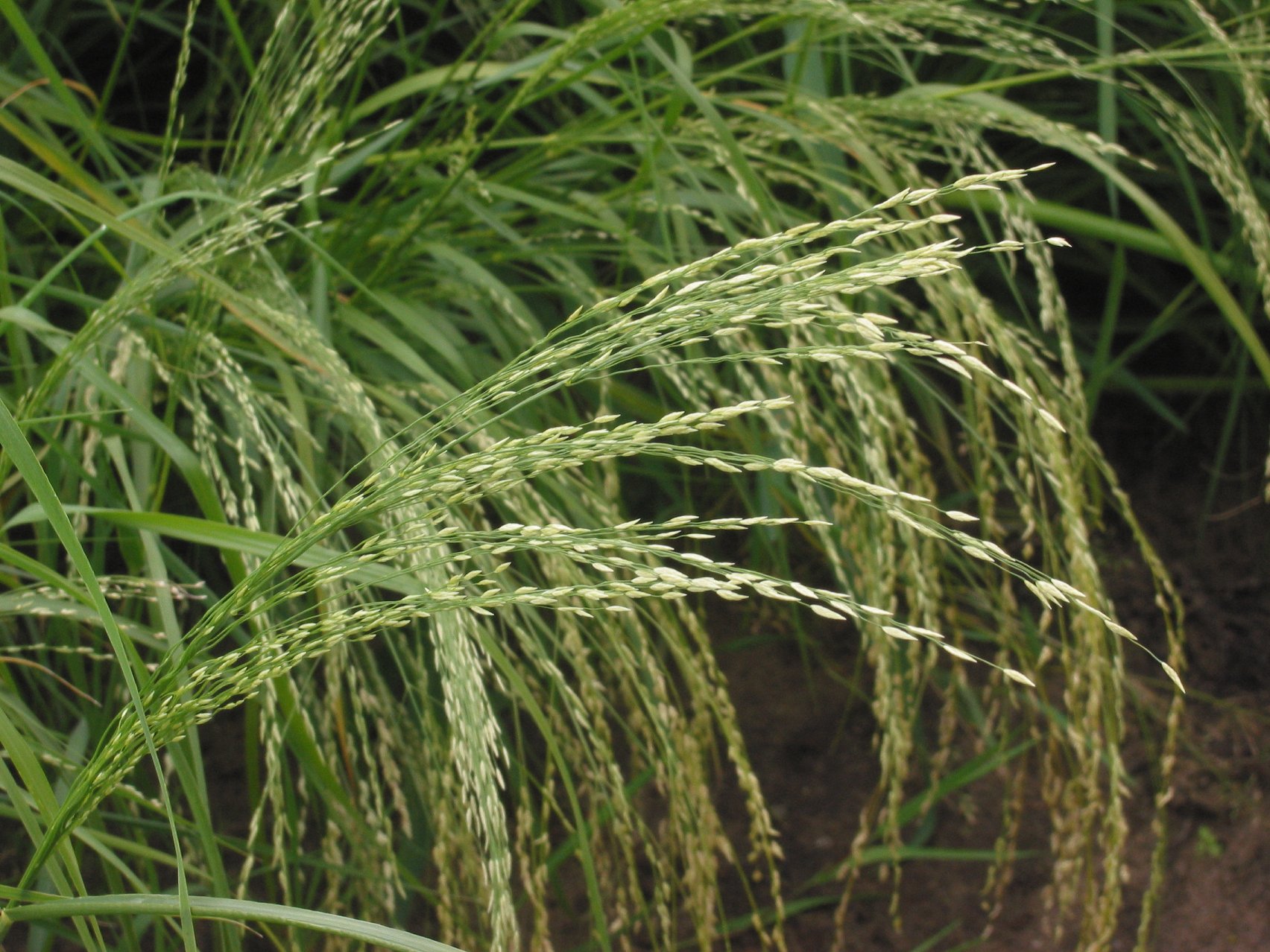- Teff
image_width = 300px
regnum =Plant ae
divisio =Magnoliophyta
classis =Liliopsida
ordo =Poales
familia =Poaceae
subfamilia =Chloridoideae
genus = "Eragrostis "
species = "E. tef"
binomial = "Eragrostis tef"
binomial_authority = (Zucc.) TrotterTeff or taf ("Eragrostis tef", Amharic ጤፍ "ṭēff", Tigrinya ጣፍ "ṭaff") is an annual grass, a species of
lovegrass native to the northernEthiopian Highlands of northeasternAfrica . It has an attractive nutrition profile, being high indietary fiber andiron and providingprotein andcalcium .cite book |authorlink= |author=National Research Council |editor= |others= |title=Lost Crops of Africa: Volume I: Grains |origdate= |url=http://books.nap.edu/openbook.php?record_id=2305&page=222 |format= |accessdate=2008-07-18 |edition= |series=Lost Crops of Africa |volume=1 |date=1996-02-14 |publisher=National Academies Press |location= |isbn=978-0-309-04990-0 |oclc= |doi= |id= |pages=222 |chapter=Tef |chapterurl=http://books.nap.edu/openbook.php?record_id=2305&page=215 |quote= |ref= ] It has a sour taste. It is similar tomillet andquinoa incooking , but theseed is much smaller.Teff is an important food grain in
Ethiopia andEritrea , where it is used to makeinjera , and less so inIndia andAustralia . (It is now raised in the USA, in Idaho in particular.) Because of its small seeds (less than 1 mm diameter), one can hold enough to sow a large area in one hand. This property makes teff particularly suited to a seminomadic lifestyle.Common names include teff, lovegrass, annual bunch grass (English); Ṭeff/Ṭéff (Amharic, both representing the same sound, an
ejective consonant ); Ṭaffi/xaffi (oromo, both representing the same sound); Ṭaff (Tigrinya); and mil éthiopien (French). It is also written as ttheff, tteff, thaff, tcheff, and thaft. [Anon. 1887specify|date=August 2008] The word "tef" is connected byfolk etymology to the EthioSemitic root "ṭff", which means "lost" (because of the small size of the grain).Teff is believed to have originated in Ethiopia between 4000 BC and
1000 BC . Genetic evidence points to "E. pilosa" as the most likely wild ancestor. [ Ingram AL, Doyle JJ, The origin and evolution of "Eragrostis tef" (Poaceae) and related polyploids: Evidence from nuclear waxy and plastid rps16. "American Journal of Botany" 90 (1): 116-122, 2003] A 19th century identification of teff seeds from an ancient Egyptian site is now considered doubtful; the seeds in question (no longer available for study) are more likely of "E. aegyptiaca", a common wild grass in Egypt.cite book | first=Renate | last=Germer | year=1985 | title=Flora des pharaonischen Ägypten | publisher=von Zabern | location=Mainz | id=ISBN 3-8053-0620-2]It is adapted to environments ranging from drought stress to waterlogged soil conditions. Maximum teff production occurs at altitudes of 1800 to 2100 m, growing season rainfall of 450 to 550 mm, and a temperature range of 10 to 27 °C. Teff is day length sensitive and flowers best with 12 hours of daylight.
Cultivation and uses
A traditional food plant in Africa, this little-known grain has potential to improve nutrition, boost food security, foster rural development and support sustainable landcare.
Teff has been widely cultivated and used in the countries of Eritrea, Ethiopia, India and its colonies, and Australia. Teff accounts for about a quarter of total cereal production in Ethiopia. [Eleni Zaude Gabre-Madhin, Market Institutions, Transaction Costs, and Social Capital in the Ethiopian Grain Market. Washington, DC: International Food Policy Research Institute, 2001] The grain has a high concentration of different nutrients, a very high
calcium content, and high levels ofphosphorus ,iron ,copper ,aluminum ,barium , andthiamin . A big advantage, the iron from teff is easily absorbed by the body. Teff is high inprotein . It is considered to have an excellentamino acid composition (including all 8 essential amino acids for humans) and haslysine levels higher thanwheat orbarley . Because of this variety, it stimulates the flora of thelarge intestine . Teff is high incarbohydrates andfiber . It contains nogluten , so it is appropriate for those withgluten intolerance orceliac disease . Consumers greatly prefer white teff to darker colored varieties.G. BELAY, H. TEFERA, B. TADESSE, G. METAFERIA, D. JARRA and T. TADESSE. 2006. Participatory Variety Selection in the Ethiopian Cereal Tef (Eragrostis Tef). "Experimental Agriculture" 42:91-101.]Teff is a particularly nutritious grain. Its nutritional properties, per 100g of cooked teff are:
It is also a rich source of other minerals including
magnesium ,boron ,copper ,phosphorous andzinc . [cite web
url=http://foodlorists.blogspot.com/2007/11/teff-and-gluten-intolerance.html
title=Teff and Gluten Intolerance
publisher= [http://foodlorists.blogspot.com/ Food Lorists]
accessdate=2008-09-18]References
External links
* [http://www.hort.purdue.edu/newcrop/nexus/Eragrostis_tef_nex.html Purdue University Center for New Crops & Plant Products]
* [http://www.ethiopianrestaurant.com/injera.html Teff page at EthiopianRestaurant.com]
* [http://www.teffseed.com Dessie Summer Lovegrass Forage variety]
Wikimedia Foundation. 2010.

